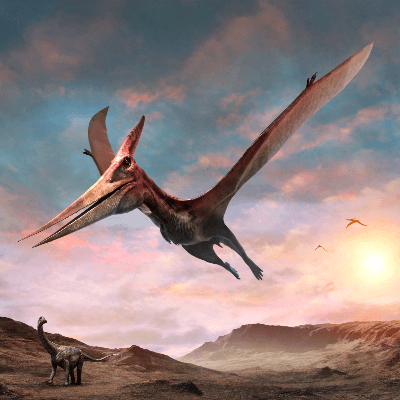
- Species Type: Pteranodon longiceps
- Genus: Pteranodon
- Period: Late Cretaceous
- Diet: Meat (carnivorous)
- Wingspan: Over 23 feet
- Total Specimens: About 1,200
- First Discovered: 1870
20 Pteranodon Facts for Kids
- The first Pteranodon was discovered in 1870 by American Paleontologist Othniel Charles Marsh.
- The first Pteranodon was discovered in Smoky Hill Chalk Member of the Niobrara Chalk Formation (North America).
- The Pteranodon got its scientific name Pteranodon longiceps in 1876, from Othniel Charles Marsh.
- The name Pteranodon means: “Toothless Wing”.
- The Pteranodon is not a dinosaur, it’s a pterosaur, which is a group containing the largest known flying reptiles.
- There are two recognized species of Pteranodons, the P. longiceps and P. sternbergi.
- The Pteranodon lived during the Late Cretaceous Period.
- The Pteranodon lived between 88 and 84.5 million years ago.
- The Pteranodon lived in what is now known as modern day North America.
- The most recognizable feature of the Pteranodon was their large cranial crests.
- The Pteranodon is believed to have been a piscivore, with a diet consisting mostly of fish.
- Pteranodons had no teeth, but rather a sharp beak like some modern day birds.
- Male Pteranodons were considerably larger than female Pteranodons.
- Pteranodons were able to fly and some paleontologists think they would have flown like the modern-day albatross.
- Pteranodons could initiate flight from standing position and didn’t need to glide off large objects.
- The average wingspan of a male Pteranodon is 18 feet.
- The average wingspan of a female Pteranodon is 12 feet.
- There is no accurate estimate of the weight of the Pteranodon.
- Unreliable weight estimates of the Pteranodon range from as little as 44 pounds to as high as 205 pounds.
- There have been over 1,000 specimens recovered since the first discovery in 1870.
Pteranodon Pictures
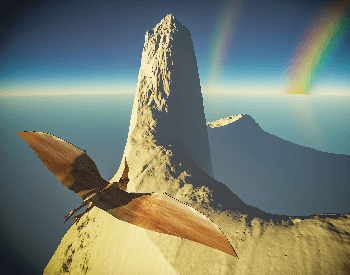
An illustration of a pteranodon flying over a mountain.Credit: Ghetty Images
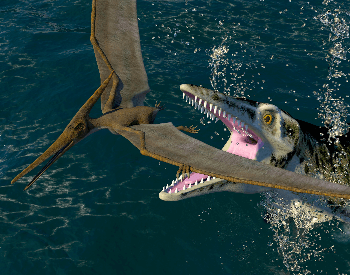
An illustration of a pteranodon being attacked by a predator.Credit: Ghetty Images
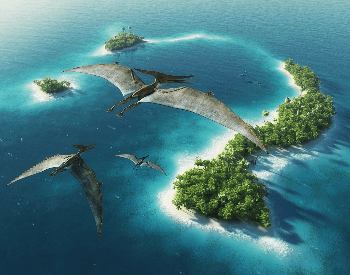
An illustration of three pteranodons flying over an island.Credit: Ghetty Images
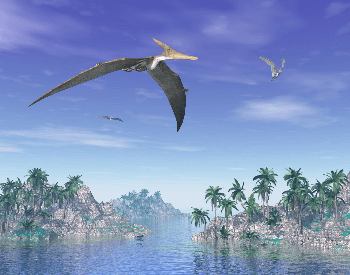
An illustration of a pteranodon flying over big lake.Credit: Ghetty Images
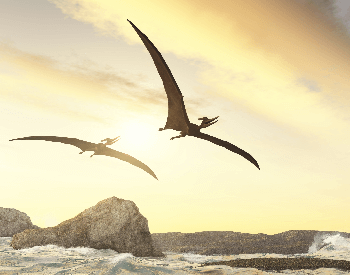
An illustration of two pteranodons flying over the ocean.Credit: Ghetty Images
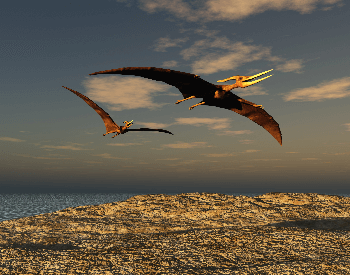
An illustration of two pteranodons flying over the coast.Credit: Ghetty Images
Additional Resources on Pteranodon
- About the Pteranodon – Find more facts and information about the Pteranodon on the LiveScience website.
- About Pterosauria – Learn about Pterosauria on the Berkeley University website.
- Pteranodon – Britannica – Discover more facts about the Pteranodon on the Britannica website.
